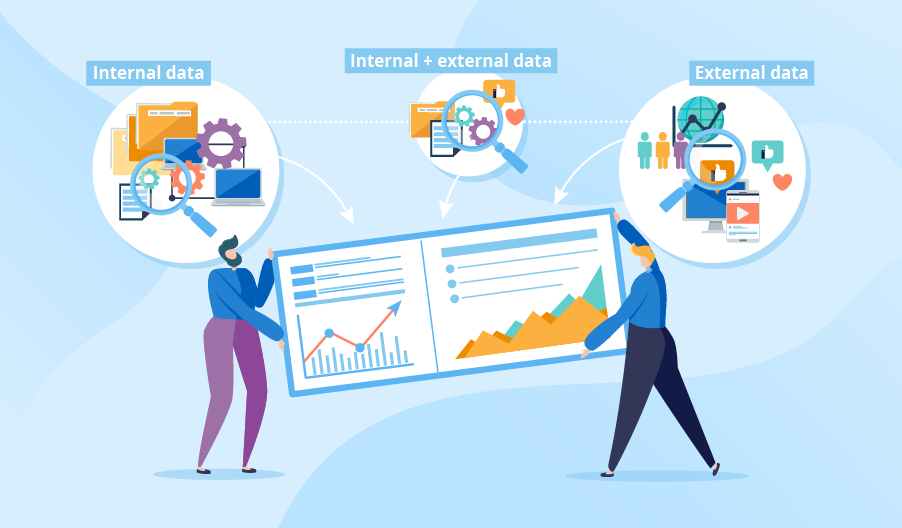In the ever-evolving world of finance, a seismic shift has occurred, transforming the way financial services organizations operate. Traditionally focused on their products, these institutions have now undergone a remarkable transformation, placing the customer at the heart of their operations. This revolution goes far beyond the mere digitalization of data and leveraging technology. It has ushered in a new era of personalization and customer experience, with even greater significance following the unprecedented challenges posed by the pandemic.
Mobile banking has emerged as the preferred channel for nearly 89% of customers, leading to the rise of digital-only banks that are redefining the traditional banking landscape. In stark contrast to established financial institutions, fintech start-ups have harnessed the power of technology and data analytics to cater to the unique preferences of individual customers.
In this era of intense competition and technological disruption, fintech has become a game-changer. Take, for instance, the process of loan disbursal. Banks have long been burdened by extensive KYC (Know Your Customer) and due diligence procedures that often delay the loan approval process. However, fintech start-ups equipped with data analytics and artificial intelligence can now make lending decisions within minutes. These leaders in the industry have embraced compelling data analytics use cases in banking and financial services, but they must continually adapt to the ever-evolving tech landscape to stay ahead.
In this dynamic landscape, financial services organizations have transitioned from a product-centric mindset to one that revolves around delivering exceptional customer experiences. The proliferation of mobile banking and the disruptive force of fintech start-ups have reshaped the industry, pushing traditional players to rethink their strategies and leverage technology to meet the evolving demands of their customers.
Why do banks need to leverage advanced analytics?
- Customer experience: The new battlefield for banks and financial services:
In the past, customer service and customer experience were closely intertwined in traditional banking business models. However, the definition of a positive customer experience has evolved. Nowadays, it is characterized by factors such as easy access, user-friendly interfaces, and swift issue resolutions. These aspects have become the forefront of creating a satisfying customer experience.
The financial services industry faces additional challenges due to the data flow originating from various channels in its omnichannel presence. Managing and integrating data from multiple channels has become a crucial aspect for financial institutions. This data flow presents unique obstacles that must be addressed to ensure a seamless and efficient customer experience.
- AI plays a crucial role in the modern Customer Experience (CX) transformation:
Financial services benefit from a wide range of applications such as chatbots, automation powered by AI, and data analytics. By accurately predicting customer needs, delivering prompt services, and efficiently resolving inquiries, financial institutions enhance the customer experience, which has become the standard in the industry.
- Data analytics is centered around enhancing productivity:
Certainly! The utilization of advanced data analytics for fraud detection has demonstrated the potential to generate substantial cost savings of up to 20%. In the past, efforts were primarily focused on automating document management systems or repetitive tasks. However, the current approach involves harnessing technology to enhance credit modeling, conduct risk analysis, and identify fraudulent activities. This shift allows human resources to be allocated to more critical projects, thereby maximizing efficiency and effectiveness in combating fraud.
Advanced Analytics in BFSI – The Benefits
Advanced analytics in banking and financial services enhance customer relationships through evolving data science methods, providing sustained benefits such as improved decision-making and enhanced operational efficiency.
- Customer 360-degree insights: In the banking and financial services sector, a deep understanding of customer preferences, multichannel touchpoints, and buyer behavior factors can be achieved through the application of advanced analytics. This enables organizations to gain valuable insights into consumer behavior that may differ from what sales representatives perceive. By relying on data-driven analysis, financial institutions can uncover the true needs and preferences of their customers. Such detailed customer understanding is of utmost importance in the banking and financial services industry, setting it apart from other sectors.
- Personalized customer experience: Personalization is widely recognized as a crucial factor in the BFSI (Banking, Financial Services, and Insurance) sector, with the aim of reducing customer churn and boosting revenue. Sales teams in BFSI now adhere to the standard of delivering the appropriate product at the opportune moment, accompanied by personalized information tailored to everyone's preferences and needs. According to a report by Forrester, even a slight enhancement of one point in the customer experience (CX) score for financial services organizations can result in revenue increases ranging from $5 million to $123 million.
- Reduction in operational costs: Banks and financial services organizations face ongoing challenges in maintaining profit margins and enhancing their operations. To address these challenges, financial firms can harness predictive analytics, visualization tools, and artificial intelligence (AI) to automate various aspects of their workflows. By replacing traditional paper-based forms with digital applications and incorporating natural language processing (NLP) technologies where applicable, these organizations can significantly reduce manual efforts and minimize errors.
Also Read: Data Analytics for Growth and Success in Retail
Data Analytics Use Cases in Banking and Financial Services
Considering the pandemic, it is important to reassess the use cases for data analytics in banking and financial services. The landscape has evolved significantly, with customer data and touchpoints undergoing rapid changes. To effectively leverage data analytics in the banking sector, it is crucial to adapt models and consider the expanded range of available data sources. Let's reconsider the application of advanced analytics considering the evolving consumer ecosystem.
- Credit Modeling: Credit risk modeling has been a long-standing practice in the banking industry. Traditionally, risk analytics models have relied on various factors such as income sources, loan history, default rates, credit rating, demographics, and more to gain insights. However, it is now recognized that additional factors need to be considered alongside standard data, particularly when analyzing consumer loans. By examining dynamics like social media profiles, utility bills, monthly spending, and savings, a more comprehensive understanding of default risk can be obtained. Moreover, unstructured data plays a crucial role in credit risk modeling as well. Leveraging AI-based text analysis and consumer personas enables a deeper understanding of customers' financial well-being and enhances the insights derived from the data.
- Risk Analysis and Monitoring: Banks and financial services organizations that adopt advanced analytics and implement dynamic risk models appear to possess greater resilience in the face of significant external changes. These risk models, however, vary between different types of financial institutions. Banks primarily focus on credit risk, fraud, and liquidity risk, whereas insurance companies prioritize claims risk and fraud detection, and investment bankers concentrate on portfolio risk analysis. Nonetheless, all financial service firms commonly face the challenge of continuously evolving fraud detection. With the advent of machine learning, artificial intelligence, and big data, organizations now have the ability to analyze a vast number of transactions, moving beyond the traditional reliance on historical data alone. By harnessing techniques such as social media profiling, behavioral analytics, predictive analytics, and advanced machine learning models, these institutions can collectively enhance their capabilities for fraud detection.
- Customer Lifetime Value: Customer lifetime value (CLV) is a valuable concept in the banking industry that offers a straightforward understanding of future revenue potential and helps direct marketing strategies while minimizing customer attrition. Estimating how customer behaviors evolve over time and identifying the key factors influencing their decisions can be quite challenging. However, advanced AI-powered models excel at recognizing patterns within data, enabling them to uncover behavioral insights that may elude human observers. These models enhance our ability to understand customer dynamics and make informed business decisions.
- AI-powered Virtual Assistants: Insurance is a crucial industry where instances of loss or damage typically occur infrequently. This makes each interaction with customers all the more important as it serves as a singular opportunity to demonstrate care and streamline processes. Nowadays, customers have a preference for efficient self-service options rather than in-person contact when it comes to managing their insurance requests. This shift has paved the way for the integration of AI-powered virtual assistants, which offer significant value by providing information on products, services, and eligibility criteria in the realm of financial services. These virtual assistants are continuously advancing to incorporate machine learning models that can validate specific criteria based on updated rules. It is not far-fetched to envision an AI-powered assistant capable of processing insurance claims within minutes, revolutionizing the speed and efficiency of the entire process.
In conclusion, data analytics has revolutionized the banking and finance sector, opening up new opportunities and transforming the way financial institutions operate. By harnessing the power of data, banks, and financial companies can gain invaluable insights into customer behavior, identify potential risks, and make data-driven decisions. From fraud detection and risk management to personalized customer experiences and efficient operations, data analytics has become an indispensable tool in the industry. As technology continues to advance and data becomes increasingly abundant, the role of data analytics in banking and finance will only grow in importance. By embracing this transformative force, institutions can stay ahead of the curve, drive innovation, and ultimately, shape the future of the financial landscape. The era of data-driven finance has arrived, and those who fully embrace it will reap the rewards of a more efficient, secure, and customer-centric industry.





